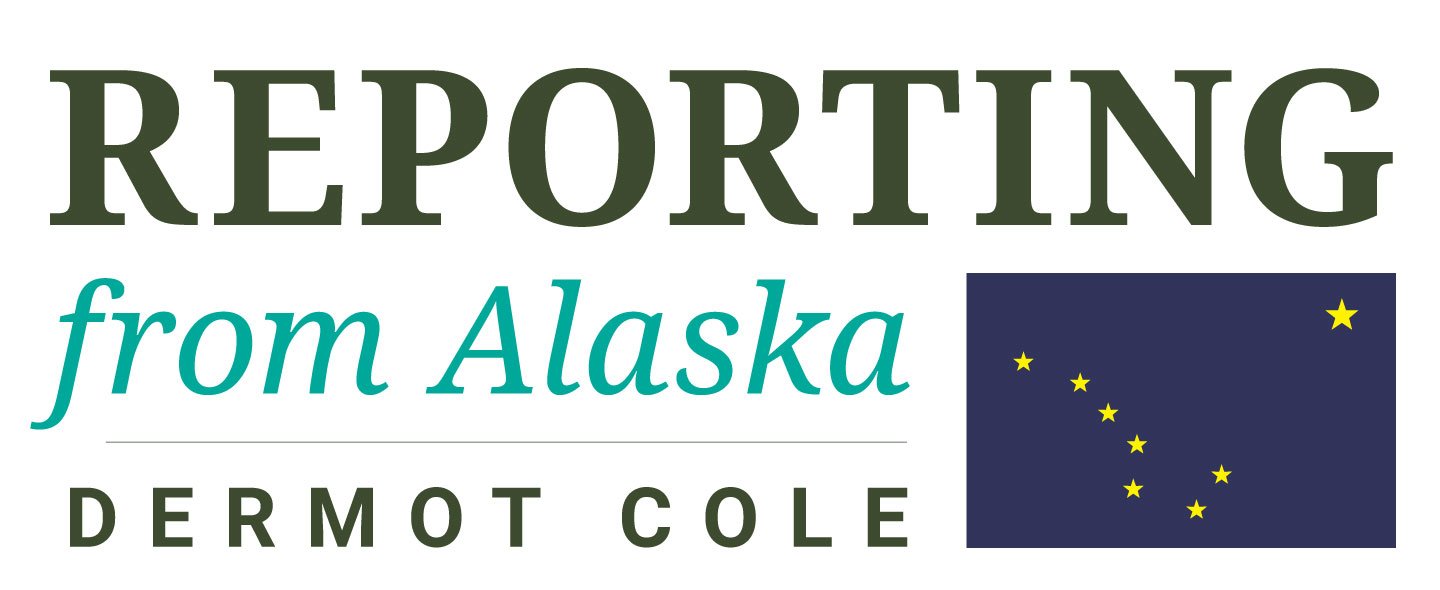Dunleavy dithers on budget as state speeds toward financial cliff in 2021
As he introduced his reckless budget last week to Alaskans, Gov. Mike Dunleavy ducked out of his own press conference after about 11 minutes, saying “I’m going to run right now,” leaving lots of unanswered questions.
After he ran off, the roomful of top staff members who stayed behind couldn’t answer the biggest of the budget questions about the new Dunleavy plan: How will government services continue after all savings except the Permanent Fund are emptied about 21 months from now?
Dunleavy’s budget envisions a deficit in the fiscal year that starts next July of about $170,000 an hour, which is $4 million per day, about $120 million a month and about $1.5 billion a year. The state could eliminate all funding for education and come within a few hundred million of a balanced budget.
The difficult answers to the budget challenge are not that complicated—cut the dividend, enact taxes and cut spending or limit increases. They have been discussed at length since 2014, when oil prices collapsed.
But Dunleavy doesn’t want to deal with these difficulties just yet. He’d rather keep saying he wants bigger dividends and more conversation with Alaskans, pretending that there is something new about the range of options open to us and that there is always time to dither.
He is creating a leadership crisis as he retreats to the sidelines. With the clock running, Alaska doesn’t have the luxury to wait for the magic moment when every politician can call for actions that are both popular and prudent.
State government power and control is centered in the governor’s office and the Legislature—where a minority can almost always block a majority—can’t fix this problem without the governor leading. It is absurd to think that the Legislature can do this alone.
Instead of starting the next round of budget discussions in Anchorage, Fairbanks or Angoon, Dunleavy took his talents to the right-wing Heritage Foundation in Washington, D.C. Monday.
While he didn’t scram after 11 minutes, he didn’t deal with the financial debacle his proposed budget would create.
He said savings except for the Permanent Fund would be mostly gone by July 2021 under his budget, but he didn’t say what would happen in October of that year.
That’s when the state would have to draw more money from the Permanent Fund to cover the $170,000 per hour deficit, cut spending, cut the dividend, raise taxes or come up with some combination.
The decision can’t wait. But Dunleavy is pretending that delay would somehow make the decisions easier. It won’t.
“It’s time for everyone to get involved and that requires accurate fiscal information be made available to the public,” he told the Heritage Foundation about his Alaska plan.
“Starting in January, I’ll be flying all over Alaska to gather folks’ input to be a conversation starter regarding potential scenarios to a sustainable budget. These include scenarios such as major budget reductions, changing the Permanent Fund formula and a constitutional spending limit.”
“If you’ve paid attention to any news out of Alaska recently, you’ll know that I’ll always fight for smaller government and a bigger Permanent Fund payout for Alaskans. My team has gone to great lengths to lay out each scenario in unbiased fashion to make sure that each Alaskan has all the facts and that the voices are heard as we plan for the next decade,” he said.
He was referring to the 10-year budget plan, an annual guess book required by law that has never really meant much in Alaska politics because no one commits to anything in it. For instance, the fiscal year 2015 guess book made much of the possibility of $100 per barrel oil and made a strong case why we’d still have billions in the Constitutional Budget Reserve right now.
For years, Dunleavy and others in the state Senate, included Lt. Gov. Kevin Meyer, blocked real action on a sustainable financial plan, claiming that unidentified cuts and unidentified new oil revenue would keep the state afloat. Their opposition has made the problem far worse than it would have been had taxes been enacted under former Gov. Bill Walker.
The options described in the new 10-year guess book are hardly “unbiased,” as all of these ideas are based on value judgements and opinions.
There are any number of options available, all of which come with costs, benefits and tradeoffs that are guaranteed to be unpopular with a segment of the population. The options have been discussed at length in Alaska for years and there are endless ways in which the state can balance spending and revenue.
Had Dunleavy actually chosen any options to support, instead of excusing himself and posturing, the proposed budget and budget discussions would be advanced to the point where a real decision can be made in early 2020, slowing the state’s speedy approach to the fiscal cliff.
Your contributions help support independent analysis and political commentary by Alaska reporter and author Dermot Cole. Thank you for reading and for your support. Either click here to use PayPal or send checks to: Dermot Cole, Box 10673, Fairbanks, AK 99710-0673.
